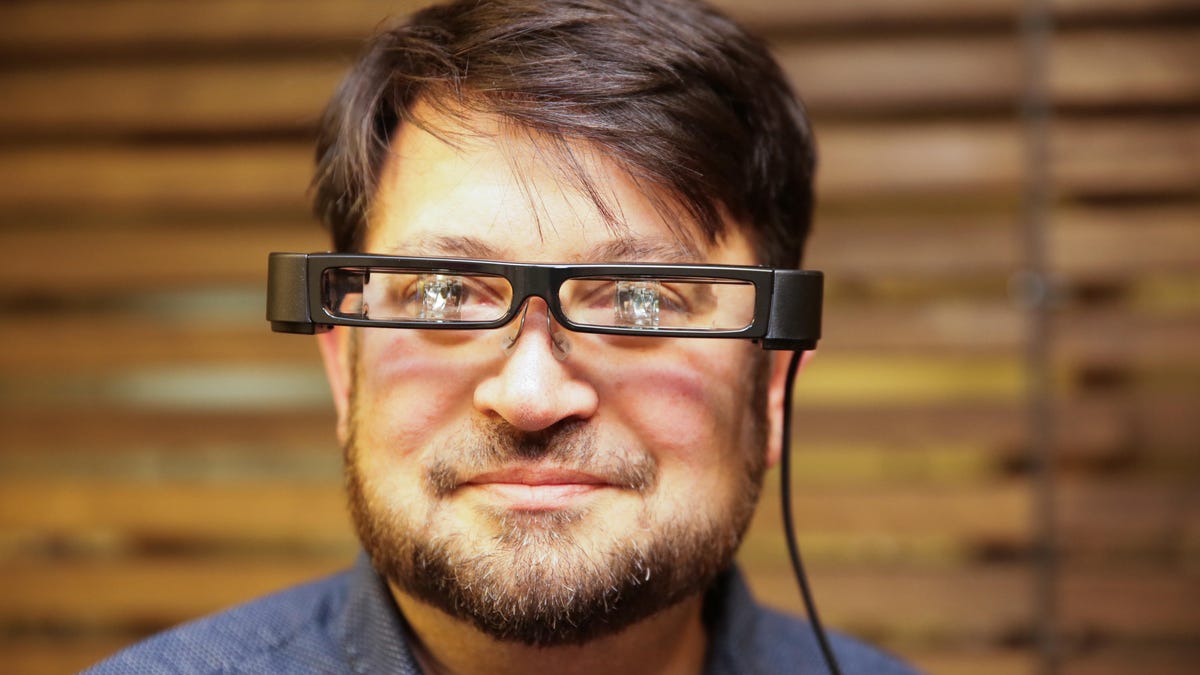Epson's $500 USB-C glasses are second screens for your phone
They work with Samsung Dex, for drone control or just playing Fortnite.

Epson's new glasses don't look normal. But they're aiming for helping people with closed captioning at lower costs.
I'm putting a funky pair of wide-lens glasses on my head. But through them, I see a big screen. It's the Samsung phone next to me. It's a computer-monitor-size desktop. I use the phone as a trackpad. I open a web browser, and try reading an article. What if I had a keyboard and filed a story on this thing? Epson's new smart glasses are a second-screen USB-C-connected way to run apps from a phone. There will be more like this.
Qualcomm now supports USB-C connected VR and AR headsets on phones with Snapdragon processors. The Epson Moverio BT-30C is exactly that. Unlike previous Epson smart glasses -- and there have been many -- which used necessary and clunky Android-powered packs, these glasses can be run via a Snapdragon 845 or 855 phone. Which allows the glasses to be lighter, and lowers the cost.
Epson's glasses plugged into a phone.
To what end? The glasses project a crisp, surprisingly bright display in both eyes, which fills a decent field of view and could be used to watch movies, use apps -- or play back captioning. Epson's already partnering with the National Theater in London to serve captions up at live shows. At a lower cost and easier setup, these glasses could do the job better.
While the real world can be seen around the floating display, a clip-on included pair of shades can create the feel of a private viewing room, too. The screen is technically 1,280x720 with a 23-degree field of view, which makes some details hard to see, but the resolution seemed crisper than it sounds.
Epson also touts its Moverio glasses as superior drone displays for hands-free remote viewing. Whether you're into smart glasses and drones is up to you, but these are a little glimpse of the types of gradually more affordable glasses that could be coming from other companies, too.

